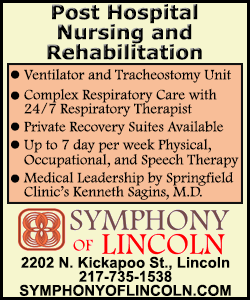|
 In a study in one New York hospital, about 4 percent of English
speakers made an unplanned return to the ER within three days,
compared to 5 percent of people with limited English. In a study in one New York hospital, about 4 percent of English
speakers made an unplanned return to the ER within three days,
compared to 5 percent of people with limited English.
Low use of professional translators may partly explain the disparity
in care, the researchers report in the Annals of Emergency Medicine.
“There’s a necessary but not sufficient step to providing care for
people with low English proficiency . . . having a good interpreter
or healthcare provider who can speak to them in their language,”
said Dr. Elizabeth Jacobs of the University of Wisconsin-Madison,
who was not part of the new study.
The study team, led by Dr. Ka Ming Ngai of the Icahn School of
Medicine at Mount Sinai in New York, analyzed 2012 data from the
Mount Sinai emergency department. More than 32,000 adult patients
and 45,000 ER visits were included. The study did not include
patients with psychiatric or substance-related complaints, those who
were nonverbal or had altered mental status, and those with a
history of frequent ER visits.

Almost 3,000 patients had limited English proficiency, and in about
half of cases someone served as an interpreter. Usually, this was a
family member or an ER staff member. Only 527 visits in this group,
24 percent, involved a professional interpreter.
More than a quarter of patients were admitted to the hospital and
1,380 patients had an unplanned return to the ER within three days.
After accounting for age, sex, insurance, race, ethnicity, triage
category and other health problems, having limited English
proficiency was not tied to greater risk of being admitted to the
hospital.
But those with limited English proficiency were about 24 percent
more likely to return to the ER unexpectedly.
Ngai told Reuters Health by email that he has been studying the
problem of language barriers for the past six years and over time
has seen some improvements.
"New medical students are now routinely educated to use interpreter
phones during their clinical simulation . . . however, there are
still many barriers including access to interpreters and interpreter
phones, time constraints, and (doctors) trying to 'get by' with
their own language skills," he said.
Ngai said regulatory bodies require hospitals to make language
services available. In New York State, for example, upon a request
to the hospital administration by the patient, the patient’s family
or representative, or the provider of medical care, hospitals must
provide translation services in inpatient and outpatient settings
within 20 minutes and in emergency settings with 10 minutes.
Most New York Hospitals use an interpreter phone service, he said.
[to top of second column] |

Patients who struggle to speak the local language are “a really
important population to study and think about how we can improve
their care,” Jacobs said.
A 5 percent rather than 4 percent rate of return to the ER is not a
large difference, but that could be due to the large number of
patients excluded from the study, and because there was no validated
measure of English proficiency, Jacobs said.
“That might be why we didn’t see large differences, if some people
considered low English proficiency actually spoke English well, or
were getting good interpretive services,” she said. “If you took
them out, the difference might be larger.”
Patients who do not speak English may struggle in other areas of the
health system more than at the ER, she added.
But even having an interpreter at the hospital won’t help patients
deal with insurance providers, she noted.
“There are contextual issues that you may not be able to fully
adequately address unless you can understand the nuances,” Jacobs
said.
"When dealing with immigrant population, it is almost always more
than 'just' language," Ngai agreed. There can be cultural issues,
too.
In addition, people with low English proficiency may also be less
able to take days off of work, and to agree to be admitted to the
hospital when necessary, than others, Jacobs said.
“We’ve made tremendous progress in assuring interpreters are more
available,” in person, over the phone or by video, Jacobs said.
But, she said, “we are very imperfect at getting patients the
services they need. It’s important for providers to be educated on
these issues and to understand how to access these services.”
It would be ideal to try to match patients with providers by
language and culture, but in the meantime, "language is a good
start," Ngai said.
SOURCE: http://bit.ly/1XWbkJT Annals of Emergency Medicine, March
29, 2016
[© 2016 Thomson Reuters. All rights
reserved.] Copyright 2016 Reuters. All rights reserved. This material may not be published,
broadcast, rewritten or redistributed.

 |